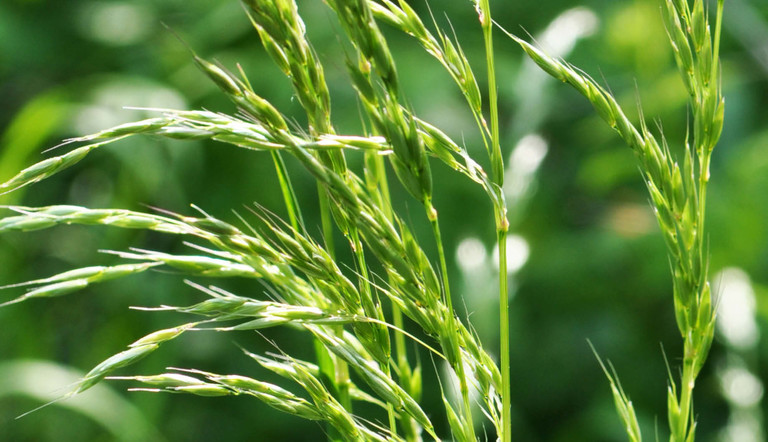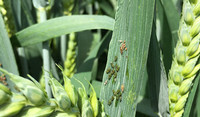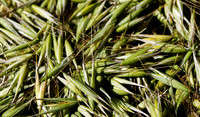
Protecting OSR with pre-emergence herbicide applications

Ahead of drilling, growers will need to be prepared to control weeds as efficiently as possible, with pre-emergence treatments still the most effective way of reducing the weed burden in new crops.
The primary principle for using herbicides at this timing in to reduce weed pressure during the critical crop establishment phase. By making a good start at this early timing, there will be less pressure on subsequent post-emergence treatments to control an overbearing volume of weeds later in the season: without pre-emergence treatments there’s a danger weeds could grow too large to be controlled by post-emergence herbicides. There also the added danger that a well-developed crop canopy could reduce the efficacy of post-emergence treatments, especially where rate and timing restrictions result in long delays between the emergence of early drilled crops and post-emergence actives being applied.
For example, halauxifen can’t be applied until 1st September at the earliest, and only when two true leaves have emerged (BBCH12), which gives weeds plenty of opportunity to grow away, out-compete the crop, and become harder to control.
A pre-emergence herbicide should therefore be applied, especially where good crop establishment is expected – for example where Cabbage Stem Flea Beetle populations aren’t expected to pose a significant threat to OSR survival (either due to the earliness of drilling or geographical location).
“Yield loss from poor broad-leaved weed control can range from 3% up to 73% depending on the vigour of the crop… this does not take into account the contamination of the harvested crop with weed seed which can reduce the marketability of the sample.”
“The mean yield response to (pre-emergence and early post-emergence) herbicides over three years was 0.94 t/ha or 41%.”
New approaches to weed control in oilseed rape
HGCA, Project Report No. 530 (April 2015)
A combination of mutually beneficial chemistries should be used throughout the OSR weed control programme to spread the risk of herbicide resistance and to ‘power up’ the overall efficacy of the combined pre- and post-emergence applications.
 Several grass and broad-leaved weeds are already resistant to a number of herbicides, so it pays to use a range of actives throughout the season to spread the risk and reduce the over-exposure of any single active.
Several grass and broad-leaved weeds are already resistant to a number of herbicides, so it pays to use a range of actives throughout the season to spread the risk and reduce the over-exposure of any single active.
BUILDING A PROGRAMME WITH METAZACHLOR
Metazachlor is the ideal building block for early weed control in oilseed rape: it provides cost-effective control of a wide range of weeds including many of the most competitive in OSR such as mayweeds, chickweed, red-dead nettle, speedwell and annual meadow grass. The only significant weeds not on label for metazachlor are cleavers and poppies, but these can easily be brought under control will the addition of clomazone and quinmerac.
Black-grass plants typically begin to emerge at the same time as winter oilseed rape but will continue to emerge well beyond the crop establishment phase. It is therefore important to apply metazachlor as soon as possible after drilling has been completed and to plan complementary post-emergence treatments accordingly.
Using metazachlor to kick-start the sequence of herbicide treatments also helps in anti-resistance strategies for black-grass control: metazachlor acts as a holding treatment before subsequent clethodim treatments are applied after the crop has reached GS14. This can then typically be followed by a third treatment of propyzamide which should be applied when soil temperatures have fallen to 10oC. With all three actives used in sequence, a different mode of action will be in place to protect the crop throughout the entire black-grass germination window.
BEST PRACTICE ADVICE
- Where possible, apply metazachlor prior to weeds germinating. Otherwise, apply metazachlor early post-emergence to enable it to be taken up by the young roots of weeds.
- Metazachlor doesn’t require much moisture to be activated, so apply even if conditions are dry.
- For useful black-grass activity, 750g or more of metazachlor (1.5 L Sultan 50SC) is needed – this should be applied pre-emergence.
THE BENEFITS OF PRE-EMERGENCE HERBICIDES IN OSR
- Prevents early weed establishment, thereby reducing reliance on later treatments
- Can be applied at the optimum timing to control specific weeds
- Early weed control removes competition, enabling the young crop to thrive
SPRAY QUALITY COUNTS
In addition to using the correct combination and sequence of herbicides, it is also vitally important to ensure these chemicals are applied accurately to maximise their efficacy. Factors including application technique, spray timing, droplet size and spray drift will all have an impact on the level of weed control achieved. For more information about spraying best practice, please visit the AHDB’s knowledge library at https://ahdb.org.uk/knowledge-library/spray-application-and-herbicide-efficacy-in-cereals-and-oilseed-rape
Power-up your programme with ADAMA’s pre-emergence herbicides
SULTAN® 50 SC (500 g/l metazachlor) is a cost-effective residual herbicide for use in winter and spring oilseed rape to control a wide range of broadleaved weeds and annual grasses including annual meadow grass and black-grass and versus other problem weeds including common chickweed, bur chervil and mayweed species.
SULTAN® can be used at pre- or early post-emergence (up to four leaves of the crop): this gives growers the option to delay spraying until GS12-14 if the pre-emergence window was hampered by poor conditions or if the seedbed was poor and cloddy.
SULTAN® is approved for use on all soil types except the very lightest land, sands and those with more than 10% organic matter.
SULTAN® also provides incidental control of Bur Chervil: a weed which is rapidly becoming increasingly troublesome for many growers.
PLEASE NOTE: do not use SULTAN® with filters finer than 50 mesh.
BLANCO® (360 g/l clomazone) is a residual herbicide for the control of broad-leaved weeds in winter and spring oilseed rape. The addition of clomazone into the pre-emergence programme will further enhance chickweed control as well as adding useful control of a range of broad-leaved weeds, cleavers and hedge mustard. BLANCO can also be used in winter and spring field beans, combining peas, vining peas and potatoes.
LEGION® (375 g/l metazachlor, 125 g/l quinmerac) is a residual herbicide for use in winter oilseed rape at pre- and early post-emergence of the crop. In addition to controlling annual meadow-grass and a range of broadleaved weeds, LEGION® also offers excellent control of poppy and Bur Chervil. Compared to metazachlor, tt also provides significantly improved activity against cleavers and shepherds purse activity and is therefore the ideal accompaniment to SULTAN®.
THINK WATER – STEWARDSHIP GUIDELINES
Stewardship guidelines apply to SULTAN® and LEGION®: on drained land avoid applying after 30th September and do not apply after 15th October.
For more information, visit the ADAMA UK website or click on the product links above. Alternatively, visit https://voluntaryinitiative.org.uk/schemes/stewardship/think-water/


